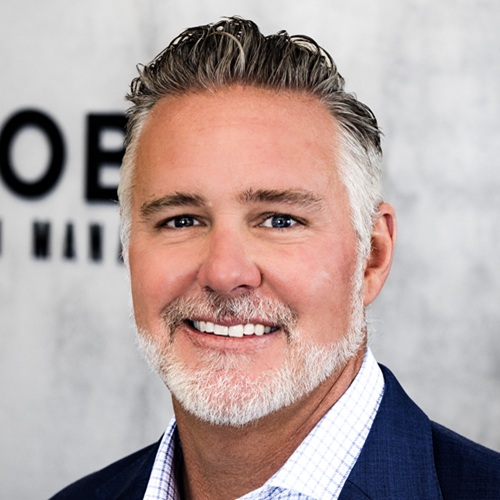5 RMD Strategies to Help Safeguard Your Retirement, Maximize Your Legacy
When managed correctly, required minimum distributions can play an important role in your financial future and those of the ones you love.


In December, the SECURE Act became law and changed the way required minimum distributions (RMDs) from IRAs and other qualified accounts work.
SEE ALSO: 10 Ways the SECURE Act Will Impact Your Retirement Savings
Officially called the Setting Every Community Up for Retirement Enhancement Act of 2019, the SECURE Act shifted the starting age at which people generally must take RMDs from 70½ to 72 years old. (For those who turned 70½ during or before 2019, the former rule still applies.)
Baby Boomers hold 54% of all U.S. household wealth and account for almost 50% of consumer spending — and yet many were winging it as they moved into retirement. Experts have urged them to get it together regarding financial planning.
From just $107.88 $24.99 for Kiplinger Personal Finance
Become a smarter, better informed investor. Subscribe from just $107.88 $24.99, plus get up to 4 Special Issues

Sign up for Kiplinger’s Free Newsletters
Profit and prosper with the best of expert advice on investing, taxes, retirement, personal finance and more - straight to your e-mail.
Profit and prosper with the best of expert advice - straight to your e-mail.
Some listen, some don’t. An average of 10,000 people turn 65 every day in the U.S., and despite all the warnings, many are moving on unprepared.
Just as a lack of overall planning can affect your portfolio and your future, a seat-of-the-pants approach to your RMDs could end up costing you money in penalties, taxes and loss of income. But there are strategies that can help you preserve your hard-earned savings. Here are a few:
1. Educate yourself.
A lot of the people we sit down with don’t seem to understand how RMDs work — how to calculate them, when to take them or the best way to take them. At 72 (or 70½ if you turned 70½ before Jan. 1, 2020), you must start taking your RMD. (For more specifics on the timing, see RMDs: When Do I Have to Take One?) You’ll start out at about 3.65%, and that percentage goes up every year. At 80, it’s 5.35%. At 90, it’s 8.77%. So you have to plan accordingly.
There are a few exceptions. For example, if you’re still working past the age of 72 and you have a retirement plan with that employer, you don’t have to take the RMD on that account until you actually retire. But if you have other accounts, you must take it on those.
2. Don’t wait until November or December to take your RMD.
Just as many people put off doing their taxes until April, most delay taking their RMDs until the end of the year. The problem with that is if the stock market is down in November or December, you’ll end up having to sell investments in a down market, and that can hurt you over time. A better way is to take the RMD over the course of the year using dividends and interest. If, for instance, you have an account that’s paying 4%, you can use that rather than relying on the market to go up.
Obviously, when you’re 95, it’s going to be difficult to cover an 11.63% RMD with dividends and interest. But in the earlier years, you should be able to make it work.
3. Consider purchasing a retirement annuity with an income benefit rider to help protect against longevity.
Let’s face it: Uncle Sam is determined to get the tax money you never paid because you had an IRA. The longer you live, the harder he tries, using those increasing RMD percentages. If your money is only in stocks or a mutual fund, you could end up draining that down to zero when you may need it most. Welcome to 95; you’re broke. But if you purchase a retirement income annuity inside your IRA, you’ll still have that money coming in every single year.
4. Purchase a universal life insurance policy to help maximize your legacy.
What if you don’t need your RMD to live your life? Some people are fortunate; having to withdraw that RMD money is actually a burden to them. They don’t want to have to take it out and pay more taxes. You can’t avoid taxes on your RMD, but you can direct that RMD to purchase a universal life insurance policy to maximize your legacy. So even if you’re drawing down your IRA over time, you can redirect the money and build it back up with a life insurance policy. Ultimately, you can convert a taxable account into a tax-free benefit.
See Also: Pros, Cons and Possible Disasters after SECURE Act
Another strategy is to use a qualified longevity annuity contract (QLAC) to help minimize your RMD exposure. In 2020, you can set aside up to $135,000 or 25% of your IRA value, whichever is smaller, and you don’t have to take the RMD from that amount until you reach 85. It’s a good way to defer the taxes on that money if you don’t need it, and it can help provide an income stream when you’re older and may need it for long-term care or other expenses.
5. Make sure to work with a financial planner who is well-versed in retirement income planning to put together a tangible plan.
Here’s where a lot of people fail. Perhaps you’re still using the adviser you chose when you were in the accumulation phase of life. But in retirement, you need someone who can help you figure out the best way to take your income and help maximize your accounts annually. Calculating your RMD each year is a complicated matter, especially if you have several retirement accounts. A retirement professional you trust can take you through it and make things a little less painful for you and your pocketbook.
See Also: How to Downsize Your RMDs
Kim Franke-Folstad contributed to this article.
This material is for informational purposes only. It is not intended to provide tax, accounting or legal advice or to serve as the basis for any financial decisions. Individuals are advised to consult with their own accountant and/or attorney regarding all tax, accounting and legal matters.
Securities offered only by duly registered individuals through Madison Avenue Securities, LLC (MAS), member FINRA/SIPC. Advisory services offered only by duly registered individuals through Global Wealth Management Investment Advisory (GWM), a Registered Investment Advisor. MAS and GWM are not affiliated entities. Investing involves risk, including the potential loss of principal. Any references to protection benefits, safety or lifetime income generally refer to fixed insurance products, never securities or investment products. Insurance and annuity product guarantees are backed by the financial strength and claims-paying ability of the issuing insurance company. Neither the firm nor its agents or representatives may give tax advice. Individuals should consult with a qualified professional for guidance before making any purchasing decisions.
The appearances in Kiplinger were obtained through a PR program. The columnist received assistance from a public relations firm in preparing this piece for submission to Kiplinger.com. Kiplinger was not compensated in any way.
Profit and prosper with the best of Kiplinger's advice on investing, taxes, retirement, personal finance and much more. Delivered daily. Enter your email in the box and click Sign Me Up.

Grant Conness is Managing Director and Co-Founder of Global Wealth Management, recognized as the No. 1 financial advisory firm in Southeast Florida by USA TODAY's 2025 Best Financial Advisory Firms list.* With more than 20 years of experience, Grant focuses on helping clients navigate the critical five years before and after retirement through the firm's proprietary Retirement Roadmap Review process. Grant is co-host of Retire Now South Florida on NBC, CBS, ABC and FOX, and he has been quoted in The Wall Street Journal.** He is also co-author of Charting Your Financial Course.
-
 Nasdaq Takes a Hit as the Tech Trade Falters: Stock Market Today
Nasdaq Takes a Hit as the Tech Trade Falters: Stock Market TodayThe Dow Jones Industrial Average outperformed on strength in cyclical stocks.
-
 $100 Fee Turning Away Visitors from National Parks
$100 Fee Turning Away Visitors from National ParksDiscover how the new $100 fee will impact your experience visiting 11 of America's most popular parks.
-
 Is Mechanical Breakdown Insurance Better Than an Extended Car Warranty?
Is Mechanical Breakdown Insurance Better Than an Extended Car Warranty?More insurers are starting to offer mechanical breakdown insurance to new car owners. What is it and should you buy it?
-
 I'm a Wealth Planner: Forget 2026 Market Forecasts and Focus on These 3 Goals for Financial Success
I'm a Wealth Planner: Forget 2026 Market Forecasts and Focus on These 3 Goals for Financial SuccessWe know the economy is unpredictable and markets will do what they do, no matter who predicts what. Here's how to focus on what you can control.
-
 I'm a Financial Adviser: Why In-Person Financial Guidance Remains the Gold Standard
I'm a Financial Adviser: Why In-Person Financial Guidance Remains the Gold StandardFace-to-face conversations between advisers and clients provide the human touch that encourages accountability and a real connection.
-
 This Is How You Can Turn Your Home Equity Into a Retirement Buffer
This Is How You Can Turn Your Home Equity Into a Retirement BufferIf you're one of the many homeowners who has the bulk of your net worth tied up in your home equity, you might consider using that equity as a planning tool.
-
 Feeling Too Guilty to Spend in Retirement? You Really Need to Get Over That
Feeling Too Guilty to Spend in Retirement? You Really Need to Get Over ThatAre you living below your means in retirement because you fear not having enough to leave to your kids? Here's how to get over that.
-
 Strategies for Women to Maximize Social Security Benefits
Strategies for Women to Maximize Social Security BenefitsWomen often are paid less than men and live longer, so it's critical that they know their Social Security options to ensure they claim what they're entitled to.
-
 This Is How Early Retirement Losses Can Dump You Into Financial Quicksand (Plus, Tips to Stay on Solid Ground)
This Is How Early Retirement Losses Can Dump You Into Financial Quicksand (Plus, Tips to Stay on Solid Ground)Sequence of returns — experiencing losses early on — can quickly deplete your savings, highlighting the need for strategies that prioritize income stability.
-
 How an Elder Law Attorney Can Help Protect Your Aging Parents From Financial Mistakes
How an Elder Law Attorney Can Help Protect Your Aging Parents From Financial MistakesIf you are worried about older family members or friends whose financial judgment is raising red flags, help is out there — from an elder law attorney.
-
 Q4 2025 Post-Mortem From an Investment Adviser: A Year of Resilience as Gold Shines and the U.S. Dollar Dives
Q4 2025 Post-Mortem From an Investment Adviser: A Year of Resilience as Gold Shines and the U.S. Dollar DivesFinancial pro Prem Patel shares his take on how markets performed in the fourth quarter of 2025, with an eye toward what investors should keep in mind for 2026.